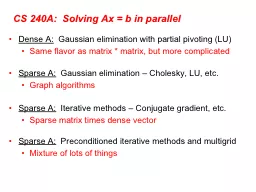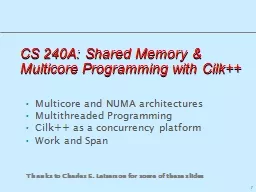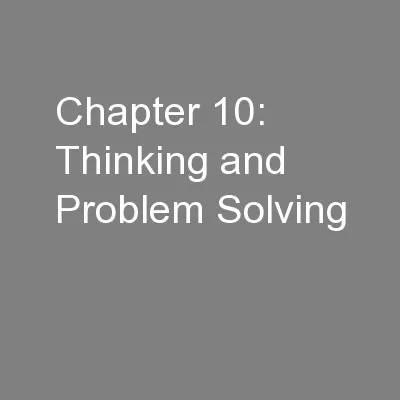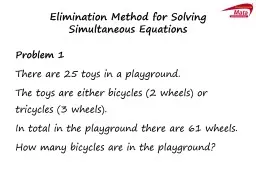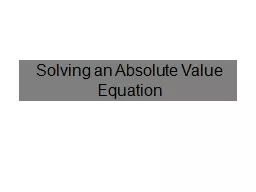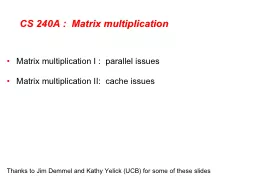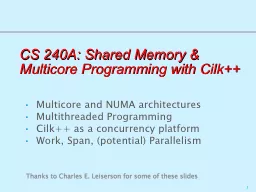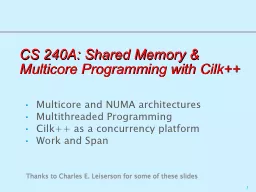PPT-CS 240A: Solving Ax = b in parallel
Author : celsa-spraggs | Published Date : 2017-11-03
Dense A Gaussian elimination with partial pivoting LU Same flavor as matrix matrix but more complicated Sparse A Gaussian elimination Cholesky LU etc Graph algorithms
Presentation Embed Code
Download Presentation
Download Presentation The PPT/PDF document "CS 240A: Solving Ax = b in parallel" is the property of its rightful owner. Permission is granted to download and print the materials on this website for personal, non-commercial use only, and to display it on your personal computer provided you do not modify the materials and that you retain all copyright notices contained in the materials. By downloading content from our website, you accept the terms of this agreement.
CS 240A: Solving Ax = b in parallel: Transcript
Download Rules Of Document
"CS 240A: Solving Ax = b in parallel"The content belongs to its owner. You may download and print it for personal use, without modification, and keep all copyright notices. By downloading, you agree to these terms.
Related Documents

